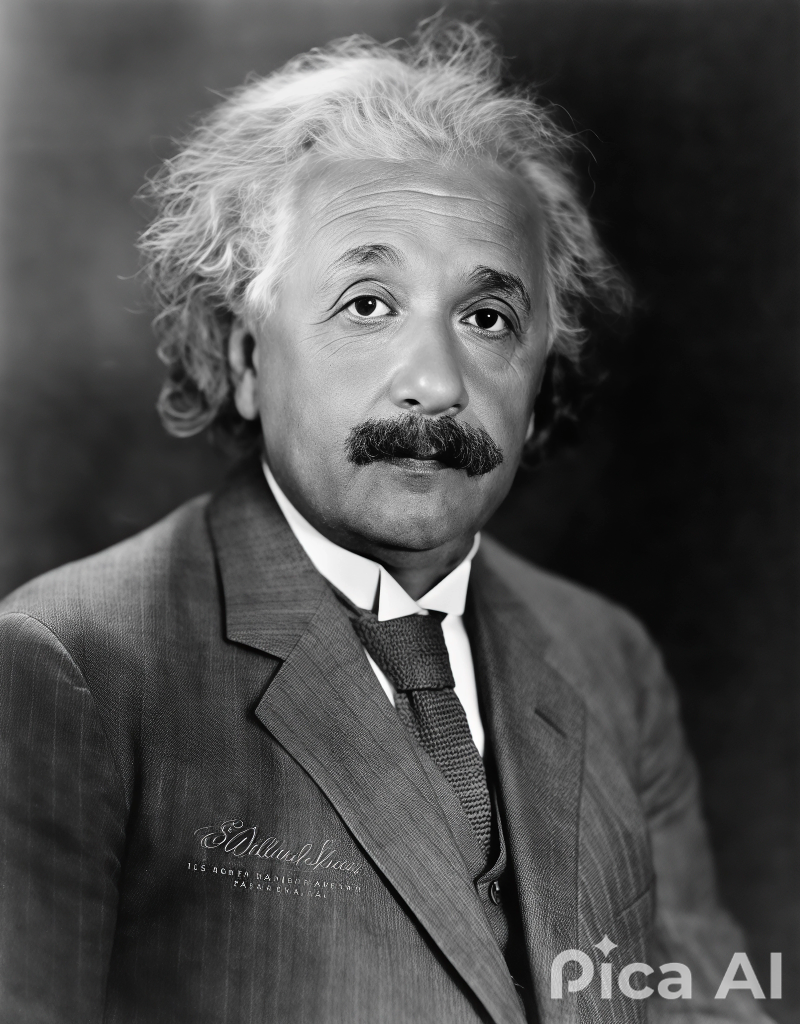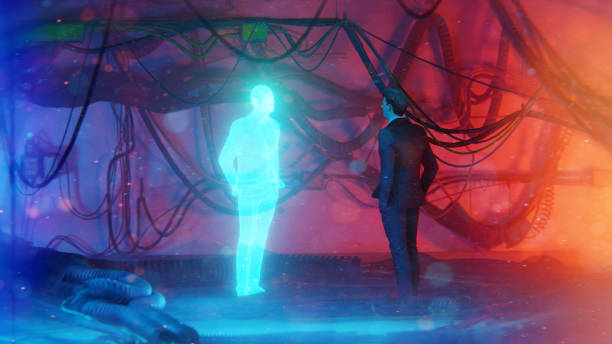Albert Einstein wasn’t just a scientist—he was a revolution in human thought. When the young patent clerk in Bern began scribbling equations that challenged the foundations of physics, he didn’t simply refine what others had discovered; he reinvented reality itself. Einstein took the invisible forces of nature—light, time, gravity, and energy—and wove them into a single, breathtaking tapestry of understanding.
His discoveries changed how we see the universe, how we measure truth, and even how we perceive ourselves within the cosmic order. The story of Einstein’s work is not just about formulas or theories; it’s about curiosity, imagination, and the limitless power of human thought.
These are the ten most important contributions of Albert Einstein—ten sparks of genius that reshaped science and the world forever.
1. The Theory of Special Relativity – Time and Space Reimagined
In 1905, Albert Einstein published a paper that would alter the course of human knowledge. This theory, called the Special Theory of Relativity, proposed a shocking idea: time and space are not absolute. They bend, stretch, and change depending on how fast you move.
Until Einstein, scientists believed in a fixed, universal clock—time ticked the same for everyone, everywhere. Einstein shattered that illusion. He showed that time slows down as you approach the speed of light and that distances contract in the direction of motion. To one observer, events may occur simultaneously; to another, they may not.
This idea wasn’t just philosophical—it was deeply mathematical and profoundly accurate. His equations explained why the speed of light (about 299,792 kilometers per second) remains constant no matter how fast you move. The implications were immense: if light speed is constant, then time and space must adjust themselves to preserve that constancy.
The theory of special relativity changed physics from a world of rigid absolutes to one of dynamic relationships. It introduced the idea that motion isn’t about where you are, but how you see. Time became elastic, and the universe became a dance between energy, matter, and light.
It was this theory that would later give birth to the most famous equation in history—E = mc².
2. E = mc² – The Most Famous Equation in the World
Einstein’s equation E = mc² is more than just a scientific symbol—it’s the heartbeat of modern physics. It tells us that energy and mass are interchangeable. Matter, the stuff we are made of, is simply condensed energy.
“E” stands for energy, “m” for mass, and “c²” represents the speed of light squared—a staggeringly large number that shows how even a tiny amount of mass can yield immense energy.
This idea explained why stars shine. Deep in their cores, nuclear reactions transform mass into energy, producing the light that warms our planet and fills our sky. Later, it also became the foundation of nuclear power and, tragically, nuclear weapons.
E = mc² transformed our understanding of the cosmos. It linked the smallest particles to the largest galaxies, uniting the micro and the macro in a single elegant truth. Energy and matter were no longer opposites—they were two sides of the same cosmic coin.
Einstein didn’t invent nuclear physics, but his equation revealed its underlying secret: that every atom carries within it the potential for both creation and destruction. In one line, he captured the universe’s duality—gentle sunlight and devastating atomic fire, both born of the same principle.
3. The Photoelectric Effect – Light as a Particle
In another of his 1905 papers, Einstein tackled a mystery that puzzled physicists for years: why certain metals emit electrons when light shines on them.
According to classical wave theory, the intensity of light should determine how many electrons are released. But experiments showed something stranger—the frequency of light mattered more than its brightness.
Einstein’s revolutionary insight was that light behaves not only as a wave but also as a stream of tiny energy packets called quanta, or photons. He proposed that each photon carries a discrete amount of energy proportional to its frequency. When a photon hits an electron in the metal, it transfers its energy, freeing the electron from the surface.
This discovery didn’t just explain the photoelectric effect—it gave birth to quantum theory, a field that would dominate 20th-century physics.
The implications were profound. Light, once thought to be purely a wave, had a dual nature—it could act as both wave and particle. This paradoxical insight became the foundation of modern quantum mechanics, the theory that governs everything from lasers to semiconductors.
Einstein’s paper on the photoelectric effect earned him the Nobel Prize in Physics in 1921. Ironically, he received it not for relativity, but for proving that light itself is stranger and more beautiful than anyone imagined.
4. The Theory of General Relativity – Gravity as the Curvature of Space-Time
If special relativity changed how we think about motion and time, general relativity changed how we understand the universe itself. Published in 1915, this theory redefined gravity—not as an invisible force, but as the bending of space and time.
Einstein realized that massive objects like stars and planets don’t just sit in space—they warp it. Space-time, the four-dimensional fabric of reality, curves around matter, and this curvature guides how objects move. The Earth orbits the Sun not because it’s pulled by a mysterious force, but because it follows the curved geometry of space-time around the Sun.
This idea was as elegant as it was revolutionary. Gravity wasn’t an external push or pull—it was the shape of the universe itself.
Einstein’s equations predicted several phenomena that later proved correct:
- The bending of light around massive objects (gravitational lensing)
- The precise orbit of Mercury
- The slowing of time near massive bodies
- The existence of black holes
When British astronomer Arthur Eddington confirmed Einstein’s predictions during a solar eclipse in 1919, it made Einstein an international celebrity overnight. Newspapers declared, “Lights All Askew in the Heavens,” signaling that Newton’s universe had given way to Einstein’s.
General relativity is still the foundation of modern cosmology, guiding everything from GPS satellites to the search for gravitational waves. It remains one of the most beautiful and accurate theories ever created—a symphony of geometry and imagination.
5. Brownian Motion – Proof of the Atomic World
Before Einstein, the existence of atoms was still debated. Many scientists believed they were just convenient mathematical tools, not physical entities. In 1905, Einstein delivered the decisive proof through his study of Brownian motion—the random movement of pollen grains floating in water.
Einstein proposed that these jittery motions were caused by countless invisible collisions with water molecules. By mathematically describing this motion, he provided a way to measure the size and number of atoms, turning abstract speculation into observable fact.
His predictions were later confirmed experimentally, cementing the atomic theory of matter. This work bridged the gap between physics and chemistry, proving that everything in the universe—stars, air, human cells—is made of the same tiny building blocks.
It was a triumph not only of intellect but of vision. Einstein didn’t just see moving particles; he saw the architecture of reality itself.
6. The Bose-Einstein Condensate – A New State of Matter
In 1924, Indian physicist Satyendra Nath Bose sent Einstein a paper about light particles behaving like waves. Einstein extended Bose’s ideas to atoms, predicting an entirely new state of matter: the Bose-Einstein Condensate (BEC).
At extremely low temperatures—near absolute zero—atoms can lose their individual identities and merge into a single quantum state. In this state, matter behaves as one giant “super-atom,” moving in perfect harmony.
For decades, the BEC remained a theoretical concept. Then, in 1995, scientists at the University of Colorado created the first Bose-Einstein condensate using rubidium atoms, confirming Einstein’s century-old prediction.
This discovery opened new frontiers in quantum physics and technology, leading to breakthroughs in superconductivity, quantum computing, and precision measurement.
Einstein and Bose’s collaboration stands as a testament to the universality of science—two minds from different worlds united by the language of mathematics and curiosity.
7. Quantum Theory of Light – The Foundation of Modern Quantum Physics
While Einstein is often remembered for relativity, his early work laid the foundation of quantum physics—a field he both advanced and questioned throughout his life.
His idea that light is composed of photons was the seed that grew into quantum mechanics. Later, Einstein proposed that energy levels in atoms are quantized, meaning electrons occupy fixed orbits and can jump between them only by absorbing or emitting discrete packets of energy.
This insight explained why atoms emit light at specific wavelengths—the basis for spectroscopy. It also paved the way for technologies like lasers, solar panels, and even quantum cryptography.
Though Einstein famously resisted the philosophical implications of quantum mechanics (“God does not play dice with the universe”), his contributions made it possible. He gave birth to a theory he could never quite accept—a paradox worthy of the man himself.
8. Stimulated Emission and the Laser Principle
In 1917, Einstein introduced another groundbreaking concept: stimulated emission. He theorized that when an atom is excited to a higher energy state, it can be triggered by incoming photons to emit additional photons that are identical in frequency, phase, and direction.
This principle became the foundation of laser technology—Light Amplification by Stimulated Emission of Radiation.
Decades later, in the 1960s, scientists successfully built the first laser using Einstein’s theoretical model. Today, lasers are everywhere: in surgery, data storage, communication, and even in the scanning device at your local supermarket.
It’s astonishing to realize that one of the most versatile inventions of the modern world traces back to a single insight from Einstein’s imagination—a vision of atoms dancing in perfect synchrony.
9. The Cosmological Constant – The Universe That Wouldn’t Stay Still
When Einstein applied general relativity to the entire cosmos, he faced a problem: his equations predicted a dynamic universe, either expanding or contracting. But in 1917, most astronomers believed the universe was static and eternal.
To reconcile theory with belief, Einstein introduced a new term into his equations—the cosmological constant (Λ)—a repulsive force that counteracted gravity to keep the universe stable.
However, in 1929, Edwin Hubble discovered that the universe was actually expanding. Einstein reportedly called the cosmological constant his “biggest blunder.” Yet history would prove otherwise.
Decades later, scientists found that the universe’s expansion is accelerating—driven by a mysterious energy that permeates space, now known as dark energy. The cosmological constant perfectly describes this phenomenon.
Einstein’s “blunder” turned out to be prophetic—a glimpse into the universe’s deepest secret. The constant he introduced out of necessity may hold the key to understanding the fate of everything.
10. Unified Field Theory – The Unfinished Symphony
In the final decades of his life, Einstein sought one last triumph: a unified theory that would combine gravity (general relativity) with electromagnetism and, ultimately, the forces governing atoms.
He dreamed of a single set of equations that could describe all of nature’s forces in harmony—a “theory of everything.” Though he never succeeded, his quest inspired generations of physicists.
Einstein’s approach to unification laid the philosophical groundwork for modern theories such as string theory and quantum gravity. His belief in an underlying simplicity—a unity beneath all chaos—continues to guide scientific thought today.
Even in failure, Einstein’s pursuit was profoundly human. It reflected his conviction that the universe, no matter how complex, is ultimately knowable—that the laws of nature, when truly understood, will reveal an elegant symmetry beyond imagination.
The Legacy of Einstein
Albert Einstein’s contributions transcend science. He changed how we think about reality itself—turning the cosmos from a mechanical machine into a living symphony of energy and geometry.
He gave humanity new tools to understand time, gravity, and light. His theories launched technologies that power our modern world, from GPS satellites to nuclear energy, from quantum computing to lasers.
But beyond the equations, Einstein’s greatest gift was wonder. He reminded us that imagination is as vital as logic, that curiosity is the seed of progress, and that even in the vastness of the universe, the human mind has the power to comprehend the infinite.
He once said, “The most beautiful thing we can experience is the mysterious. It is the source of all true art and all science.”
Through his work, Einstein revealed that the universe is not just a place—it’s a story. A story of light, time, and thought. And in that story, humanity found its most brilliant storyteller.






